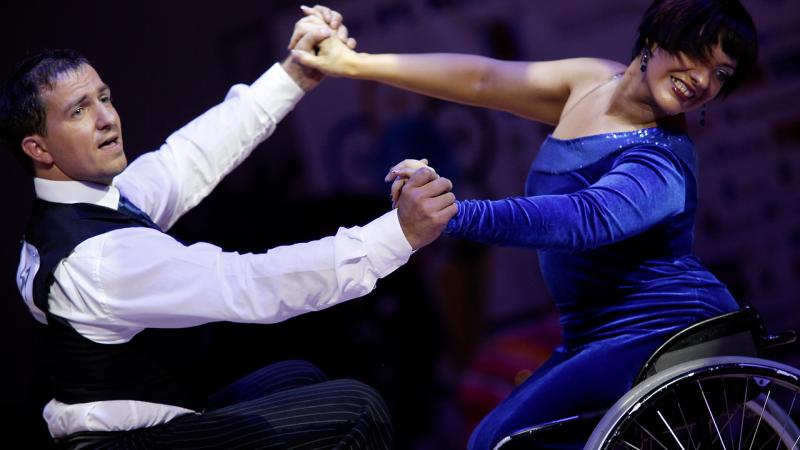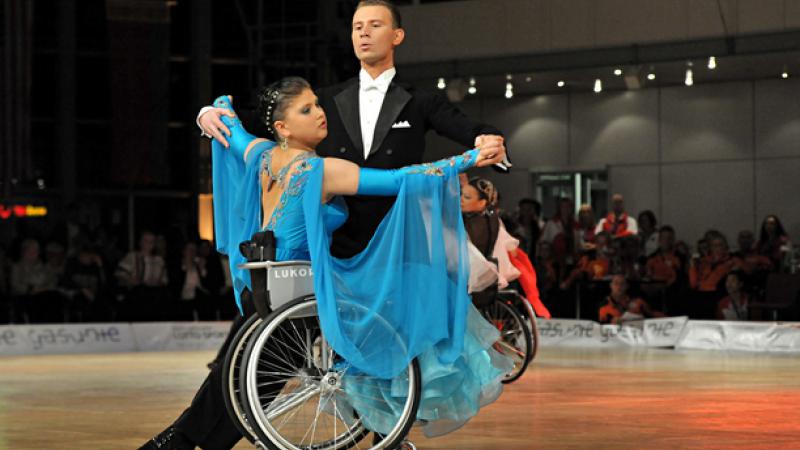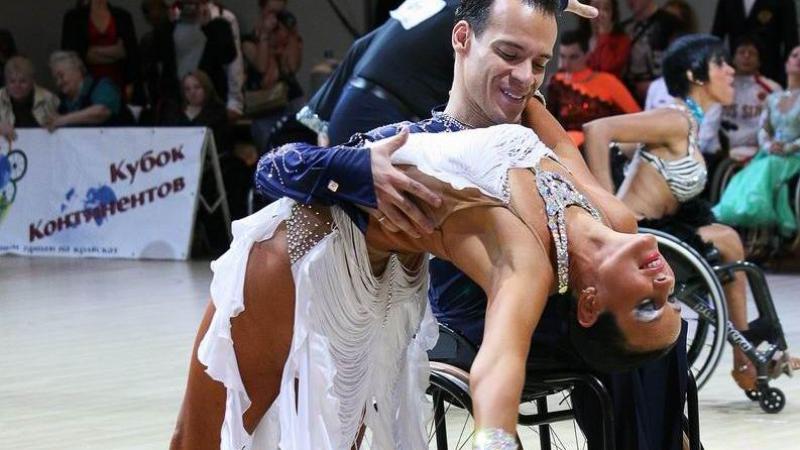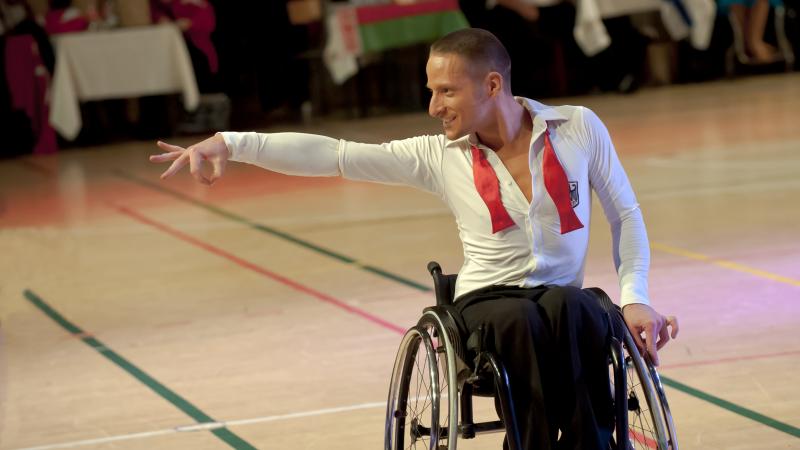CLASSIFICATION IN PARA DANCE SPORT
This is a brief overview of classification in the sport and is in no way legally binding. In all cases the sport-specific classification rules will take precedence.
For further questions please contact info@worldparadancesport.org.
WHAT IS CLASSIFICATION?
In order to safeguard the integrity of fair competition, all Para sports have a system in place which aims to ensure that winning is determined by sporting factors such as skill, fitness, power, endurance, tactical ability and mental focus, the same factors that account for success in sport for able bodied athletes.
This system is called classification.
Through classification, it is determined which athletes are eligible to compete in a sport and how those athletes are then grouped together for competition, in order to minimise the impact of those athletes’ impairments on sport performance.
Classification is sport-specific because an impairment affects the ability to perform in different sports to a different extent. As a consequence, an athlete may meet the criteria to compete in one sport, but may not meet the criteria in another sport. Having an impairment is thus not sufficient for an athlete to compete in Para sport.
The groupings of athletes by the degree of activity limitation resulting from their impairments are called ‘Sport Classes’. This, to a certain extent, is similar to grouping athletes by age, gender or weight.
Classification across the Paralympic Movement is governed by the IPC Athlete Classification Code and Standards. More information about classification can be found here.
CLASSIFICATION IN PARA DANCE SPORT
The details of classification in Para dance sport are set out in the World Para Dance Sport Rules and Regulations (link below).
Athletes must have at least one the seven impairment types that fulfil the minimum impairment criteria to be eligible to compete in World Para Dance Sport.
ELIGIBLE IMPAIRMENT TYPES
- Impaired muscle power
- Impaired passive range of movement
- Limb deficiency
- Leg length difference
- Athetosis
- Hypertonia
- Ataxia
SPORT AND COMPETITION CLASSES IN PARA DANCE SPORT
In Para dance sport there are six sport classes and four competition classes.
Each sport class is made up of letters and a number, and is specific to an event. The letters refer to the event in which the athlete competes.
SC is Combi Standard, SD is Duo Standard and L&F is for combi Latin, duo Latin, single, and freestyle dances.
Duo competition class is named by the event.
Duo ST refers to duo standard event, and Duo LA refers to duo Latin event.
The number in the Duo competition class name is the group for the event.
INDIVIDUAL SPORT CLASSES
SC1
Athletes competing in combi standard class 1 have lower trunk control but inability to actively straighten their trunk, and/or inability to keep their arm frame with the partner during dancing movements. You might expect to see athletes with spinal cord injury or spina bifida, quadriplegic cerebral palsy, poliomyelitis involving trunk and/or arm, or traumatic brain injury.
SC 2
Athletes competing in combi standard class 2 have limited impairment in their upper body. These athletes are able to keep their trunks straight, and can keep their arm frames with the partner during dancing movements. You might expect to see athletes with spinal cord injury or spina bifida, missing legs, diplegic cerebral palsy, or poliomyelitis involving lower limbs only.
SD1
Athletes competing in duo standard 1 have impairment involving their trunk and arms. These athletes have difficulties in maintaining trunk stability during dance movements, and may have difficulty in wheel control and/or elongation out of base of support.
SD2
Athletes competing in duo standard 2 have full/near full function of their trunk and legs. These athletes are able to maintain trunk stability during dance movements, and have fair to good elongation ability out of their centre of gravity.
L&F1
Athletes competing in class 1 of combi Latin, and/or duo Latin, and/or single dances, and/or freestyle have impairments involving their trunk and arms. These athletes generally have no pelvis movement and poor trunk control. Reaching out of their centre of gravity is impossible unless compensated by support.
L&F2
Athletes competing in class 2 of combi Latin, and/or duo Latin and/or single dances, and/or freestyle have no or minimal impairment involving their trunk and pelvis. These athletes generally have good trunk control and can have various degrees of pelvis movement. They can reach out of their centre of gravity and generally have good wheel control.
DUO COMPETITION CLASS
In Duo competition, the team competition class is defined by combining both partners’ scores from Athlete Evaluation. If the couple scores less than 50 they will compete in the competition class 1; if their combined score is 50 or more, they will compete in competition class 2.
Duo ST1
Couples competing in duo standard class 1 either both have an SD1 sport class, or the combined scores are less than 50. These couples will have impairment in their ability to have variety of movements and thus fewer choreography possibilities, or there will be difficulty in the choreography for the balance between the two athletes.
Duo ST2
Couples competing in duo standard class 2 either both have an SD2 sport class, or the combined scores are equal or more than 50.
Duo LA1
For couples competing in duo Latin class 1, either both athletes have an L&F1 sport class, or the combined scores are less than 50. These couples will have greater impairment in their ability to have a variety of movements and thus fewer choreography possibilities, or there will be difficulty in the choreography for the balance between the two athletes.
Duo LA2
For couples competing in duo Latin class 2, either both athletes have an L&F2 sport class, or the combined scores are equal or more than 50.
ORGANISING CLASSIFICATION
Event organisers must provide sufficient time for classification which can be completed at least two hours before warm-up dancing. The room must be of sufficient size and have a hard floor to test dancing.

 Facebook
Facebook
 Twitter
Twitter
 Instagram
Instagram



